Original Title: "Millions are flocking to PumpFun as streamers?"
Original Author: hitesh.eth
Original Translation: AididiaoJP, Foresight News
Yesterday, I browsed through some live streams on Pumpfun and saw some creators earning astonishing incomes, which was very interesting. Compared to other platforms like Kick, Twitch, or even YouTube, the returns on Pumpfun are higher.
Interestingly, the payment structure is different. Traditional platforms optimize for platform advertising and take a significant cut before creators earn any income, with content discovery being algorithmic and uneven.
On Pump, the reward cycle is much closer to the action itself: attention converts to transaction volume, transaction volume immediately converts to creator fees, and viewers have economic interests as the popularity continues to rise. This creates a tighter flywheel with fewer hierarchies between creators and rewards.
Turning Attention into Fees
Thus, in terms of rewards, on Pump, if you stream, you have the potential to earn more than on other platforms. The dashboard shows some very interesting streamers and very engaging live streams. One of the popular ones is "Streamer Coin." This person has been donating all the creator fees they earn to small creators, and they also have this token. Every creator has a token associated with them whenever they start streaming. The market cap of "Streamer Coin" has reached around 22 million.
The token turns viewers into co-owners of the hype. When viewers hold your token, they are not just bystanders: they become promoters, shoutcasters, and part of the retention loop. If you set up fee sharing, giveaways, or live tasks, you are essentially running a real-time, on-chain loyalty program without intermediaries. The price becomes a public scoreboard of attention.
I also saw another token called "bagwork." They had a very viral clip. A well-known internet personality, Radley, slapped the streamer who was live with the title "bagwork," and that clip went viral on social media, bringing him attention.
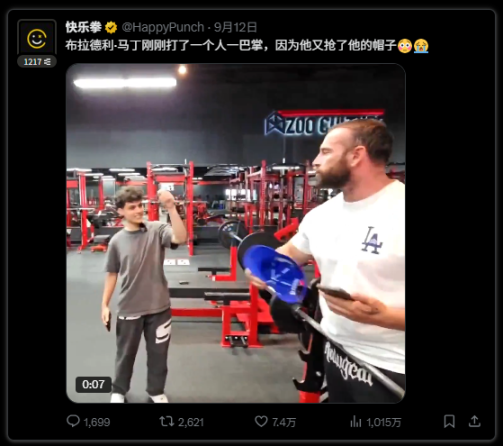
This is the new model: capturing a moment that the internet cannot ignore and then directing that attention to on-chain assets tied to your live stream. Viral clips → New wallet surge → Transaction volume → Creator fees → More content. This cycle rewards those who can repeatedly create moments.
Streamers are trying to gain attention and do different things. I also saw a creator distributing food to people in Los Angeles. There is a token called "feed the people" (FTP). They have been donating everything they earn through these live streams. They donate food, provide shelter, etc., and they are trying to promote a noble cause.
Cause-driven live streaming turns empathy into measurable action. When viewers see the transparent flow of on-chain funds going to meals or shelters, trust is built more quickly. That trust turns into community, community into sustainability, and sustainability brings compound fees to creators and ongoing results for the cause.
From Twitch to Pumpdotfun
About 7.3 million people stream on Twitch each month, but I believe 90% of them earn nothing. Even some top streamers do not earn any significant fees compared to the new streamers on Pump. For example, the person behind "bagwork" earned $150,000 in just two days, which is astonishing.
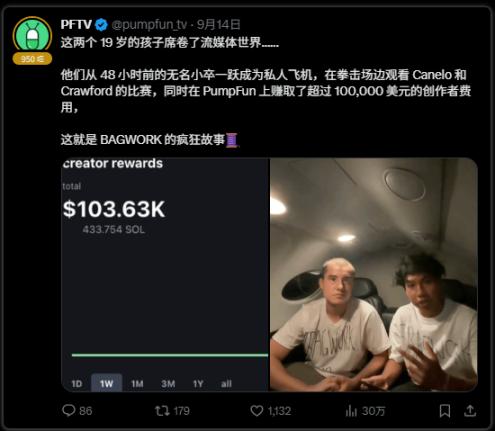
Why most Twitch streamers struggle to survive: monetization relies on subscriptions, Bits (donation points), ads, and brand partnerships. Content discovery favors those who are already famous, payments are delayed, and the platform takes a significant cut. For small creators, the average monthly income is often very low or unstable, which stifles motivation. Pump disrupts discovery and monetization: small creators can rise quickly when a moment explodes, and the rewards are instant because they are on-chain.

Pump provides a platform where you can stream while expecting to earn more money. It is a crypto-native platform that is somewhat decentralized, relatively more decentralized compared to purely centralized platforms like Kick and Twitch.
"Relatively decentralized" is important because it reduces platform risk. If your rewards depend on smart contracts and liquidity pools, you are less affected by arbitrary policy changes, hidden bans, or delayed withdrawals. The trade-off is volatility and personal responsibility, but many creators prefer this over opaque rules.
Why People Stream: Emotion, Identity, and Ownership
Here you have a crypto community, a niche community that can buy your tokens, sell your tokens, generate transaction volume for you, and you can set fees on every transaction made with your tokens to earn money. It's very straightforward. But you also need to "graduate" the token, which has requirements. Based on the current Solana price, it's about $20,000 (85 SOL).
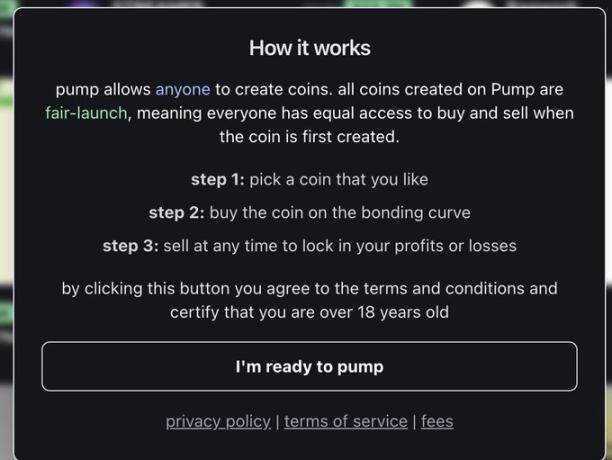
"Graduation" is essentially a credibility threshold. You demonstrate sustained attention, holder growth, and transparent token distribution to gain deeper liquidity and better value discovery. In practice, this means: a stable schedule, a clear storyline, regular catalysts, a fair launch mechanism, and active community management. When your live stream becomes a story that people want to trade, the token will successfully launch.
When I think about live streaming, the question I ponder is why people actually stream. Why do they go to these platforms, turn on their cameras, and showcase whatever they are doing, with many doing very unique and strange things? The first reason would be hope. They may hope to earn some money because they see many success stories everywhere. When they chase money and aim for quick profits, many, I don't quite believe, can play the long game. They might try for a few days or weeks, and when the money doesn't come rolling in, they may quit streaming.
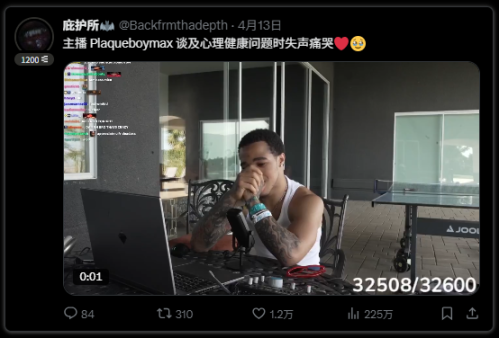
Emotionally, streaming brings you recognition, identity, and a room to be heard. For some, it is therapy; for others, it is performance. It is a way to transform loneliness into ritual. Financially, it offers options: even small rewards feel meaningful because they are tied to your own IP (intellectual property) and your own schedule. People stream to be seen, to feel important, to publicly practice a skill, and to see if the market recognizes them.
However, many continue to stream regardless of how much they earn. Sometimes, for a few, money is not that important, but they genuinely enjoy the process of streaming. They really like talking to any community they have. It could be 10 people or 100 people; they enjoy conversing with others and sharing their emotions. For those who lack emotional support in their lives, if they don't have anyone in their family or friend circle to share emotions and life events with, this is a great practice.
This is the quasi-social relationship engine. You build micro-communities where inside jokes, rituals, and shared progress make people feel safe. Creators gain a sense of responsibility and purpose, while viewers gain companionship and meaning. On Pump, this bond is priced in real-time, which can amplify joy and pressure, so you need boundaries and clear rules.
Even if they are looking for someone to share what they are truly good at. If they work at a company but really love singing, singing brings them relief. If singing can put them into a flow state, they can choose to sing. They can go live and connect with the audience. If they are good at singing, they can build an audience and potentially earn money and recognition through this method; there is huge potential here. For those seeking relief from a busy, painful life, looking for a space to be their true selves, this is fantastic.
The flow state combined with ownership is why this will scale. When your side hustle skill becomes a ritual supported by tokens, shared with fans who hold part of the upside potential, the feedback loop is tangible: practice → audience growth → price action → more practice.
Pump is interesting; it may provide long-time streamers on Twitch, Kick, or even YouTube, who have not been able to earn significant income from their efforts, an opportunity to realize returns. It can help them capitalize on the long-term efforts they have put in.
You can think of it as retrospective funding. The work you have accumulated turns into instant credibility. On the first day of Pump, you are not a new creator; you are a verified IP with a profile, backstory, and ready to convert into holders.
This is similar to what we see in NFTs and the potential they bring. What NFTs have done for some great artists, streamers may see the same response from Pump live streaming. It can do the same thing. In the 12 months from 2021 to 2022, many artists who earned less than $100 and could not sell their artwork in real life made $10,000 to $100,000 by selling their digital art through NFTs. I believe a similar trend will happen here. The artist category is limited. Not many artists are joining NFTs.
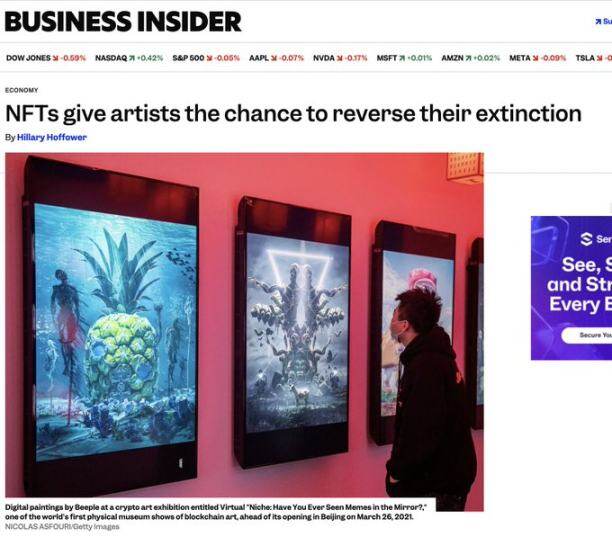
OpenSea unlocked the primary market and secondary royalties for visual artists. Pump can unlock real-time royalties for streamers: transaction fees, token-gated benefits, on-chain sponsorships, and community-owned milestones. The same energy, but with a real-time market and ongoing content instead of static art.
Next Steps: Migration, Strategy Manual, and the Future
On Pump, I believe there could be millions considering joining. They can register as streamers, and some streamers may become millionaires within the next 12 months. If you are someone looking to make money in this field, this is also a great opportunity. Even if you have been streaming on different platforms and enjoy talking about what you know, if you are good at something and want to share it with others, then start streaming. There’s no need to be shy about it. You just need to open your heart, express yourself, and have that ice-breaking moment. If something is holding you back, give it a try.
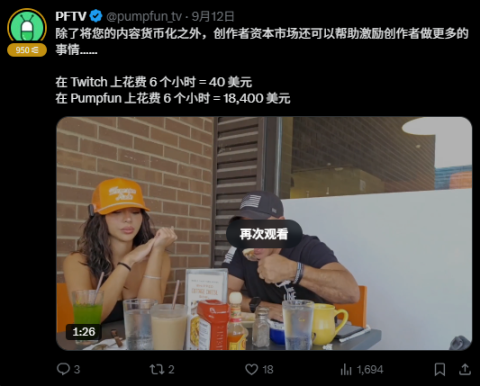
The trigger point for migration will be simple: once some mid-tier creators publish transparent, on-chain earnings that far exceed their old income, the public will take notice, creators will follow the incentives, and viewers will follow the creators. Liquidity will follow both.
If you are serious about making money, if money is important to you, even if it’s not all about money but about sharing what you have been hiding in your mind, what you have always wanted to do, what you want to pursue, but you have obligations and responsibilities that prevent you from pursuing that passion, then now is the time. Pursue your passion in the right way, allowing you to maximize capital, better leverage your passion for monetization, earn more money, enjoy the process, and achieve better returns.
Think of live streaming as a startup: a simple roadmap, token utility, weekly catalysts, and clean wallet management. Set up guardrails for your community so that speculation does not overshadow your craft.
I believe that in the near future, there will be a wave of streamers on Pump. Many streamers will join when news spreads in the community that they could earn more money by migrating to Pump, and the flywheel will start turning. At the same time, not only will streamers make money on Pump, but traders will also profit. You can speculate on the growth of streamers, buy that token, sell it, and flip it for profit.
Traders will develop strategy manuals around "attention signals": sudden spikes in online viewer counts, Discord join rates, Twitter mentions, watch time retention rates, viral clip propagation, and on-chain holder growth. The best strategies will combine narrative and numbers, not just numbers alone.
It’s all about meme coins. They are all memes, but these memes are doing great things. On the streamer side, streamers are rewarded for their efforts. They are trying to gain attention for whatever they do. They gamify the attention. They put in the effort, and the more effort they invest, the greater their chances of gaining attention.
On the trading side, you need to be very focused. You need to immerse yourself, scan on-chain wallets, and try to find the right alpha (information advantage). It’s not easy, and you are putting in effort there too; it’s a game that requires high investment from both sides. On the streamer side, you need to put in more effort to earn more money; on the trading side, you need to put in more effort to make money.
Tools to pay attention to: KOLscan and Stalkchain for KOL wallet tracking and narrative mapping, DEX dashboards for tracking fund inflows/outflows, Holderscan for checking holder concentration, new wallet velocity, LP (liquidity provider) depth and lock-up, and timing of whale entries and exits. X (for clip propagation speed and sentiment). A simple rule: rising attention plus improved holder distribution plus deepening liquidity is a stronger bet than attention alone.
Attention has always been money, and Pump just makes it liquid. Those who can reliably build and track attention will capture the most value here, with creators doing so through ongoing programming and genuine storytelling, and traders through disciplined interpretation of social and on-chain signals.
Original link Original Title: "Millions are flocking to PumpFun as streamers?"
Written by: hitesh.eth
Translated by: AididiaoJP, Foresight News
Yesterday, I browsed through some live streams on Pumpfun and saw some creators earning astonishing incomes, which was very interesting. Compared to other platforms like Kick, Twitch, or even YouTube, the returns on Pumpfun are higher.
Interestingly, the payment structure is different. Traditional platforms optimize for platform advertising and take a significant cut before creators earn any income, with content discovery being algorithmic and uneven.
On Pump, the reward cycle is much closer to the action itself: attention converts to transaction volume, transaction volume immediately converts to creator fees, and viewers have economic interests as the popularity continues to rise. This creates a tighter flywheel with fewer hierarchies between creators and rewards.
Turning Attention into Fees
Thus, in terms of rewards, on Pump, if you stream, you have the potential to earn more than on other platforms. The dashboard shows some very interesting streamers and very engaging live streams. One of the popular ones is "Streamer Coin." This person has been donating all the creator fees they earn to small creators, and they also have this token. Every creator has a token associated with them whenever they start streaming. The market cap of "Streamer Coin" has reached around 22 million.
The token turns viewers into co-owners of the hype. When viewers hold your token, they are not just bystanders: they become promoters, shoutcasters, and part of the retention loop. If you set up fee sharing, giveaways, or live tasks, you are essentially running a real-time, on-chain loyalty program without intermediaries. The price becomes a public scoreboard of attention.
I also saw another token called "bagwork." They had a very viral clip. A well-known internet personality, Radley, slapped the streamer who was live with the title "bagwork," and that clip went viral on social media, bringing him attention.

This is the new model: capturing a moment that the internet cannot ignore and then directing that attention to on-chain assets tied to your live stream. Viral clips → New wallet surge → Transaction volume → Creator fees → More content. This cycle rewards those who can repeatedly create moments.
Streamers are trying to gain attention and do different things. I also saw a creator distributing food to people in Los Angeles. There is a token called "feed the people" (FTP). They have been donating everything they earn through these live streams. They donate food, provide shelter, etc., and they are trying to promote a noble cause.
Cause-driven live streaming turns empathy into measurable action. When viewers see the transparent flow of on-chain funds going to meals or shelters, trust is built more quickly. That trust turns into community, community into sustainability, and sustainability brings compound fees to creators and ongoing results for the cause.
From Twitch to Pumpdotfun
About 7.3 million people stream on Twitch each month, but I believe 90% of them earn nothing. Even some top streamers do not earn any significant fees compared to the new streamers on Pump. For example, the person behind "bagwork" earned $150,000 in just two days, which is astonishing.

Why most Twitch streamers struggle to survive: monetization relies on subscriptions, Bits (donation points), ads, and brand partnerships. Content discovery favors those who are already famous, payments are delayed, and the platform takes a significant cut. For small creators, the average monthly income is often very low or unstable, which stifles motivation. Pump disrupts discovery and monetization: small creators can rise quickly when a moment explodes, and the rewards are instant because they are on-chain.

Pump provides a platform where you can stream while expecting to earn more money. It is a crypto-native platform that is somewhat decentralized, relatively more decentralized compared to purely centralized platforms like Kick and Twitch.
"Relatively decentralized" is important because it reduces platform risk. If your rewards depend on smart contracts and liquidity pools, you are less affected by arbitrary policy changes, hidden bans, or delayed withdrawals. The trade-off is volatility and personal responsibility, but many creators prefer this over opaque rules.
Why People Stream: Emotion, Identity, and Ownership
Here you have a crypto community, a niche community that can buy your tokens, sell your tokens, generate transaction volume for you, and you can set fees on every transaction made with your tokens to earn money. It's very straightforward. But you also need to "graduate" the token, which has requirements. Based on the current Solana price, it's about $20,000 (85 SOL).

"Graduation" is essentially a credibility threshold. You demonstrate sustained attention, holder growth, and transparent token distribution to gain deeper liquidity and better value discovery. In practice, this means: a stable schedule, a clear storyline, regular catalysts, a fair launch mechanism, and active community management. When your live stream becomes a story that people want to trade, the token will successfully launch.
When I think about live streaming, the question I ponder is why people actually stream. Why do they go to these platforms, turn on their cameras, and showcase whatever they are doing, with many doing very unique and strange things? The first reason would be hope. They may hope to earn some money because they see many success stories everywhere. When they chase money and aim for quick profits, many, I don't quite believe, can play the long game. They might try for a few days or weeks, and when the money doesn't come rolling in, they may quit streaming.

Emotionally, live streaming brings you recognition, identity, and a room to be heard. For some, it is therapeutic; for others, it is a performance. It is a way to transform loneliness into a ritual. Financially, it offers options: even small rewards feel meaningful because they are tied to your own IP (intellectual property) and your own schedule. People stream to be seen, to feel important, to publicly practice a craft, and to see if the market acknowledges them.
However, many people continue to stream regardless of how much they earn. Sometimes, for a few, money is not that important, but they genuinely enjoy the process of streaming. They really like talking to any community they have. It could be 10 people or 100 people; they enjoy conversing and sharing their emotions. For those who lack emotional support in their lives, if there is no one in their family or friend circle to share their feelings and what is happening in their lives, this is a great practice.
This is the quasi-social relationship engine. You build micro-communities where inside jokes, rituals, and shared progress make people feel safe. Creators gain a sense of responsibility and purpose, while viewers gain companionship and meaning. On Pump, this bond is priced in real-time, which can amplify joy and stress, so you need boundaries and clear rules.
Even if they are looking for someone to share what they are truly good at. If they work for a company but really love singing, singing brings them relief. If singing can put them into a flow state, they can choose to sing. They can go live and connect with an audience. If they are good at singing, they can build an audience and potentially earn recognition and money through this method; there is huge potential here. For those seeking relief from a busy, painful life, looking for a space where they can be their true selves, this is fantastic.
The flow state combined with ownership is the reason this will scale. When your side hustle skill turns into a ritual supported by tokens, shared with fans who hold part of the upside potential, the feedback loop is tangible: practice → audience growth → price action → more practice.
Pump is interesting; it may provide long-time streamers on Twitch, Kick, or even YouTube, who have not been able to earn significant income from their efforts, an opportunity to realize returns. It can help them capitalize on the long-term efforts they have put in.
You can think of it as retrospective funding. The work you have accumulated turns into instant credibility. On the first day of Pump, you are not a new creator; you are a verified IP with a profile, backstory, and fans ready to convert into holders.
This is similar to what we see in NFTs and the potential they bring. What NFTs have done for some great artists, streamers may see the same response from live streaming on Pump. It can do the same thing. From 2021 to 2022, during those 12 months, many artists who earned less than $100 and could not sell their artwork in real life made between $10,000 and $100,000 by selling their digital art through NFTs. I believe a similar trend will happen here. The category of artists is limited. Not many artists are joining NFTs.

OpenSea unlocked the primary market and secondary royalties for visual artists. Pump can unlock real-time royalties for streamers: transaction fees, token-gated benefits, on-chain sponsorships, and community-owned milestones. The same energy, but with a real-time market and continuous content instead of static art.
Next Steps: Migration, Strategy Manuals, and the Future
On Pump, I believe there could be millions considering joining. They can register as streamers, and some streamers may become millionaires within the next 12 months. If you are someone looking to make money in this field, this is also a great opportunity. Even if you have been streaming on different platforms and enjoy talking about what you know, if you are good at something and want to share it with others, then start streaming. There’s no need to be shy about it. You just need to open your heart, express yourself, and have that ice-breaking moment. If something is holding you back, give it a try.

The trigger point for migration will be simple: once some mid-tier creators publish transparent, on-chain earnings that far exceed their old income, the public will take notice, creators will follow the incentives, and viewers will follow the creators. Liquidity will follow both.
If you are serious about making money, if money is important to you, even if it’s not all about money but about sharing what you have been hiding in your mind, what you have always wanted to do, what you want to pursue, but you have obligations and responsibilities that prevent you from pursuing that passion, then now is the time. Pursue your passion in the right way, allowing you to maximize capital, better leverage your passion for monetization, earn more money, enjoy the process, and achieve better returns.
Think of live streaming as a startup: a simple roadmap, token utility, weekly catalysts, and clean wallet management. Set up guardrails for your community so that speculation does not overshadow your craft.
I believe that in the near future, there will be a wave of streamers on Pump. Many streamers will join when news spreads in the community that they could earn more money by migrating to Pump, and the flywheel will start turning. At the same time, not only will streamers make money on Pump, but traders will also profit. You can speculate on the growth of streamers, buy that token, sell it, and flip it for profit.
Traders will develop strategy manuals around "attention signals": sudden spikes in online viewer counts, Discord join rates, Twitter mentions, watch time retention rates, viral clip propagation, and on-chain holder growth. The best strategies will combine narrative and numbers, not just numbers alone.
It’s all about meme coins. They are all memes, but these memes are doing great things. On the streamer side, streamers are rewarded for their efforts. They are trying to gain attention for whatever they do. They gamify the attention. They put in the effort, and the more effort they invest, the greater their chances of gaining attention.
On the trading side, you need to be very focused. You need to immerse yourself, scan on-chain wallets, and try to find the right alpha (information advantage). It’s not easy, and you are putting in effort there too; it’s a game that requires high investment from both sides. On the streamer side, you need to put in more effort to earn more money; on the trading side, you need to put in more effort to make money.
Tools to pay attention to: KOLscan and Stalkchain for KOL wallet tracking and narrative mapping, DEX dashboards for tracking fund inflows/outflows, Holderscan for checking holder concentration, new wallet velocity, LP (liquidity provider) depth and lock-up, and timing of whale entries and exits. X (for clip propagation speed and sentiment). A simple rule: rising attention plus improved holder distribution plus deepening liquidity is a stronger bet than attention alone.
Attention has always been money, and Pump just makes it liquid. Those who can reliably build and track attention will capture the most value here, with creators doing so through ongoing programming and genuine storytelling, and traders through disciplined interpretation of social and on-chain signals.
免责声明:本文章仅代表作者个人观点,不代表本平台的立场和观点。本文章仅供信息分享,不构成对任何人的任何投资建议。用户与作者之间的任何争议,与本平台无关。如网页中刊载的文章或图片涉及侵权,请提供相关的权利证明和身份证明发送邮件到support@aicoin.com,本平台相关工作人员将会进行核查。




